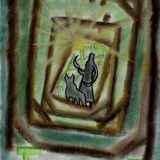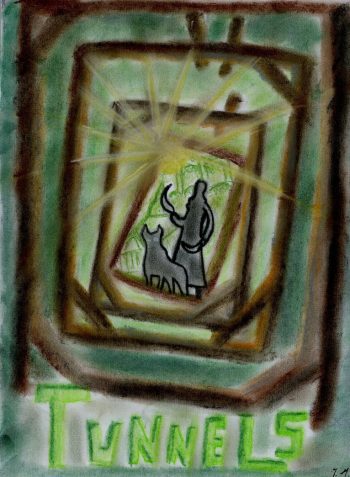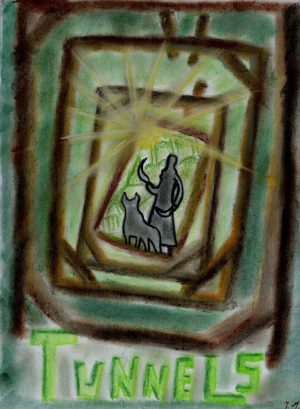The Tunnel – Ernesto Sábato – 1948
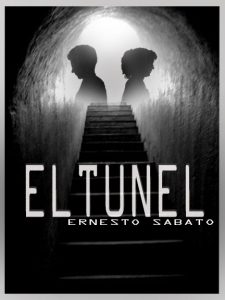
Posted by Steven on 3/12/2012, 19:56:40
I just finished it today too. It bugs me that it kept reminding me of something else I had read, but I couldn’t remember what. Of course there are similarities with Alain Robbe-Grillet’s Jealousy which we read, but that’s not the one I was thinking of.
Yes, crazy but very good. And plenty of mystery left at the end as well.
~
Posted by Lale on 4/12/2012, 8:41:47, in reply to “Re: The Tunnel”
: similarities with Alain Robbe-Grillet’s Jealousy
: which we read
I was also reminded of Robbe-Grillet’s book which was, in my opinion, brilliant. I thought this was less brilliant and more annoying. (The books which tell the story of a seemingly smart person not being able to break away from a disastrous relationship are always irritating, we see the right way but the character cannot see it, and that is irritating. Like the protagonist of Mario Vargas LLosa’s Bad Girl, was that maybe the book you were thinking of?)
Lale
~
Posted by Joffre on 4/12/2012, 9:39:07, in reply to “Re: The Tunnel”
I started this morning.
Off the top of my head, a few books it reminds me of:
Any confessional sort of novel, esp. Notes from the Underground, Zeno’s Conscience. Also, although it precedes it, Lolita.
And in the jealousy of Remembrance of Things Past. That was an impression from my first reading a couple years ago. Haven’t gotten that far this time.
~
Posted by Steven on 4/12/2012, 11:18:42, in reply to “Re: The Tunnel”
I think what sounded familiar to me was not necessarily the theme of jealousy but the way the narrator relates his own mental state and chronicles his demise. Perhaps it is Hunger by Knut Hamsun I was thinking of. But all of the suggestions you both have made are good comparisons.
Update: Just before posting this I decided to do a query on my online database for books I had tagged “murder.” The one I was thinking of is The Private Memoirs and Confessions of a Justified Sinner by James Hogg. It had that same eerie sense of a man who understood his failings but would still do the same thing over again.
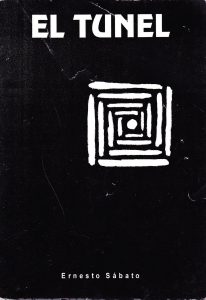
Posted by guillermo maynez on 4/12/2012, 12:31:44, in reply to “Re: The Tunnel”
I read “The Tunnel” for the first time back in the spring of 1989. Alas! I was 19, and I thought it was all very Existential and profound. This time around, I enjoyed it more, because I was laughing at it! I found it ludicrous and funny, not saddening and disturbing. If history repeats itself, first as a tragedy and then as a farce, when I was 19 I hadn’t had a “serious” relationship, and I saw the book as a portrait of love’s infinite sufferings and difficulties; after several relationships I find it parodic and satirical. Perhaps I’m wrong, but I had a great time re-reading it.
~
Posted by Steven on 5/12/2012, 9:04:27, in reply to “Re: The Tunnel”
I was browsing Amazon to see if any other works by Sábato were available in English (there aren’t any) and stumbled across this monograph:
“Quantum Mechanics and Literature: An Analysis of El Túnel by Ernesto Sábato”
The description reads, in part:
“Employing quantum mechanics as a metaphor, we show how temporal discrepancies in the order and interpretation of these pivotal occurrences can be modeled as bifurcations of reality into different wavefunctions, which collapse only upon observation. We discuss how the Copenhagen and Many Worlds Interpretations of quantum mechanics, along with the idea of branes in M-theory, represent distinct ways of representing alternative narratives.”
The introduction (the first page of which you can read as a free preview) explains that Sábato was a nuclear physicist before turning novelist, so it’s not unlikely that he would have incorporated some of the more exotic aspects of quantum physics in his writings. The piece is 25 pages long, but I’m not sure I’m up for it. I did read a couple of introductory books about quantum mechanics in my younger days, but I don’t remember the terminology. I know what they mean by “bifurcations of reality into different wavefunction, which collapse upon observation,” but the rest is meaningless to me. Oh well, it’s just $3–maybe I’ll give it a try.
It would seem to me that any uncertainty in the timeframes or alternate realities are very subtle. I don’t recall anything suggestive of this as I was reading, do you?
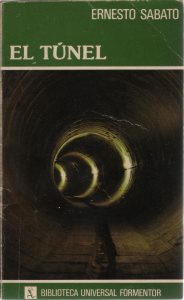
Posted by guillermo maynez on 5/12/2012, 13:22:32, in reply to “Re: The Tunnel”
“The Tunnel” didn’t seem to me to be specially challenging in its time frame or chronology. Any disturbance in the strict sequence of time I could attribute to the narrator’s deranged mind, more than to any deliberate technical narrative (in any case, the latter would be firmly embedded in the character of Castel). One work that we have read together recently and that comes to my mind is “Omensetter’s Luck”, now that’s one tale where the workings of quantum mechanics could be found!
I have also read several books on quantum mechanics. Not having a formal scientific background, I can’t say I have understood a lot of it, but I guess I’ve had a glimpse of its most important philosophical implications, which is what I look for in it. Probably the best book I’ve read about it is Brian Greene’s “The Elegant Universe”.
~
Posted by Steven on 5/12/2012, 18:09:20, in reply to “Re: The Tunnel”
I went ahead and bought the monograph and read it from my Kindle this morning. It’s very enlightening, and points out some aspects to the story that I hadn’t caught. I’ll go into it in detail once we’re ready to discuss “spoilers.”
~
Posted by Steven on 6/12/2012, 10:35:12, in reply to “Re: The Tunnel”
: “The Tunnel” didn’t seem to me to be specially
: challenging in its time frame or chronology.
What they point to is María’s letter in Chapter XV. The memories she’s always talking about aren’t memories of an undisclosed past, but of the future when she and Juan Pablo will sit by the sea and when he will create the painting that she sees early in the novel. We should take her comments literally, that she actually does remember the future and she is the woman in the painting. In other words, she has Recollections of Things to Come.
Now isn’t that spooky? I’ve just read the brief introduction to Recollections of Things to Come, and it makes reference to a character who wants to live outside the rules of time.
~
Posted by guillermo maynez on 6/12/2012, 11:27:22, in reply to “Re: The Tunnel”
It is spooky, but spooky things are happening: last night I was reading “Recollections…” (in Spanish, of course), and my mind strayed a bit. I’m finishing an article for a magazine, entitled “The Broken Mirror”, and I was thinking that perhaps it wasn’t the best title. Then I turned the page and kept reading, and it said that the city looked like it was being seen in a “broken mirror”!! I almost threw the book away.
Elena Garro was something of a witch. She married the famous poet Octavio Paz when she was very young, and then divorced. Later, she made some imprudent (or at least politically incorrect) remarks about the student massacre of 1968, and left Mexico, to live in Paris for 20 years in a dark apartment, surrounded by cats.
~
Posted by Steven on 7/12/2012, 9:14:32, in reply to “Re: The Tunnel”
I’ll go ahead and post my thoughts on The Tunnel now, as for the rest of the weekend my house will be inundated by grandchildren (yes, both of them). There isn’t much in the way of a spoiler here, since we know right off the bat that Juan Pablo is going to kill María.
First I’ll say what I thought about the novel before I read the monograph on Quantum Mechanics and Literature. Then I’ll do a separate post summarizing that paper.
The novel seemed to me to be both an existential cry of despair and a study of a disturbed mind that never ceases to analyze itself. It’s also a depiction of intense jealousy, and we must assume that Juan Pablo may be an unreliable narrator.
The narrator’s existential nihilism is manifest in this quote: “On a tiny planet that has been racing toward oblivion for millions of years, we are boen amid sorrow; we grow, we struggle, we grow ill, we suffer, we make others suffer, we cry out, we die, others die, and new beings are born to begin the senseless comedy all over again…. Was our life nothing more than a sequence of anonymous screams in a desert of indifferent stars?”
And yet Juan Pablo admits that he creates most of his own suffering: “I was suffering the tortures of the damned in my personal hell of analyzing and imagining.” This is a good depiction of the way jealousy works on a person–we analyze every bit of evidence to come up with the most painful interpretation possible.
One doesn’t have to be as insanely jealous as Juan Pablo to have this experience: “Before the words were out of my mouth, I was slightly repentant. Behind the person who wanted the perverse satisfaction of saying them, stood a purer and more compassionate person preparing to take charge the minute the cruelty of that sentence had reached its mark.”
To the same degree that Juan Pablo explains his every thought, María remains an enigma. What does she see in the painting? What attracts her to the artist who is stalking her? What is it in her past that she is so ashamed or afraid of? Is she Hunter’s lover?
There are other enigmas in the novel: What does the painting of the woman looking out to the sea mean to Juan Pablo? Why does he keep bringing up the story of the man forced to eat a rat?
The Tunnel belongs to what you might call a sub-genre of literary portraits of painters with psychological or social difficulties. The Recognitions by William Gaddis is probably the most notable, but there is also The Vivisector by Patrick White.
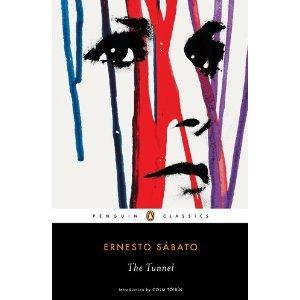
Posted by Steven on 7/12/2012, 11:10:04, in reply to “Re: The Tunnel”
(I did it again–wrote a long message, previewed it, and forgot to Post it, so I lost it. I’ll try to recreate what I said. It would be nice, though, if I could just hop over into that parallel universe in which I DID remember to click “Post.” I wonder what how different the world will become over there because of that one small change? Unfortunately, though, I’m stuck here in this tunnel of a single reality, only one tunnel, dark and solitary: mine…)
Here is the review I wrote of “Quantum Mechanics and Literature: An Analysis of El Túnel by Ernesto Sábato” by Victoria Carpenter and Paul Halpern:
Ernesto Sábato was a nuclear physicist before he turned novelist, so the premise of this monograph is not as far-fetched as it first sounds. Sábato was also an admirer of Jorge Luis Borges, whose short story “The Garden of Forking Paths” can similarly be seen as a literary exposition of quantum physics.
The authors begin by explaining the scientific principles involved. At the subatomic level, matter and energy can exist simultaneously in different physical states. The phenomenon “collapses” into one state or another at the moment it is observed. This gives the counter-intuitive appearance of the effect having preceded the cause. One implication of this is that time is not linear just because we perceive it as such. Further, the famous thought experiment called Schrödinger’s Cat introduced the idea of quantum uncertainty at the macro level: the cat in the sealed box is neither dead nor alive until it is observed, but is in both states at once. This led to the notion of parallel realities or universes. All outcomes are not only possible, but real. Our experience is one, not of making things happen, but of choosing which reality we observe. As the authors point out, this has enormous implications for the concept of fate and predestination.
A close reading of Sábato’s novel, The Tunnel, shows that there are three scenes in which cause and effect are hard to explain in conventional terms. First, María, an apparent stranger to Juan Pablo, sees a painting by Juan Pablo in which a woman is looking out to the sea. Later María writes a letter in which she describes herself as though she were, at that moment, literally the subject in that painting. Finally there is a scene in which Juan Pablo and María are together on the sea shore, which could have been when he painted her. But Don Pablo doesn’t meet María until after she has viewed the painting. There is no way to arrange these three events chronologically in which the effect doesn’t precede the cause.
Most readers will assume, as I did when reading The Tunnel, that María simply chose to imagine herself as having been painted by Juan Pablo. And when she has her first conversation with Don Pablo and refers to sad and tragic memories, we assume that this is something from her past that she will never disclose. Carpenter and Halpern theorize, however, that María’s memories are of the future, when Don Pablo destroys their happiness, and the three episodes are not consecutive at all, but simultaneously existing in different planes of reality. Sábato most directly references the idea of choosing among alternate realities when he has Don Pablo speak of his life as “only one tunnel, dark and solitary, mine,” while implying that others have choices in the reality they experience.
This is an intriguing paper, and given Sábato’s background in nuclear physics, a very credible one. The physics are not as intimidating as I thought they might be, though I did have some background knowledge of such ideas as wave/particle duality and Schrödinger’s Cat. The quotations from El Túnel are all in Spanish with no English translation, but this was an ebook, and the Kindle’s translator took care of this. I think anyone who has read The Tunnel will find this monograph worthwhile.
(end of review)
The authors’ ideas make a lot of sense to me. But it is also probable that Sábato wrote the novel in such a way that it would be meaningful to those without any knowledge of quantum mechanics, so this is not essential to understanding it. It does, however, explain a lot of what we find enigmatic in Mária, as well as the meaning of the painting. And the tunnel analogy that Juan Pablo uses is a perfect fit for the notion of parallel realities.
The authors also go into other aspects of the novel including the theme of maternity. This is the title of Juan Pablo’s painting, and there are several references in the text to his mother.
The find the sea to be an important element, and spend a lot of time talking about where the viewer is in relation to the woman in the small detail of the painting which fascinates María. To know that the woman is looking out to the sea, we have to see her from the back with the sea in the background. Yet when María in her all-important letter in chapter XV talks about Juan Pablo painting her memories, she says “But now your figure is interposed; you stand between me and the sea.” Juan Pablo then comments: “There was no other person. We two were alone,” as though he is confirming that he did indeed visit the sea with María and that the painting is of her. It is clues like this that tell us the chronology of the novel is not to be trusted.
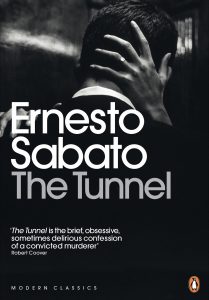
Anthony Cummins – 22 May 2011 – The Guardian – https://www.theguardian.com/books/2011/may/22/the-tunnel-ernesto-sabato-review
Disturbing, funny and still fresh, this 1948 novel narrated by an artist in jail for murder was the Argentine writer Ernesto Sábato’s first book (he died last month aged 99). Juan Pablo Castel is a painter who stalks a woman named María after he notices her in a gallery studying one of his canvases with interest. The more he forces his way into her life – discovering that she has a blind husband and an ex-lover who killed himself – the more jealous he becomes. Soon his green eye gets the better of him – and María.
A perverse effect of the candour in Castel’s retrospective account is that it almost makes you forget he’s a murderer (and a rapist, it becomes clear). His pithy misanthropy offers readers an uncomfortable, reckless pleasure as the Buenos Aires art scene (“THE CRITICS… a plague I have never understood”), the city’s postal service and people who give to charity all come in for a caustic kicking. It is hard not to relish his morose wit: “I have always had a tenderness and compassion for children (especially when through supreme mental effort I have tried to forget that they will be adults like anyone else).”
Yet as Colm Tóibín points out in a preface to this reissue of Margaret Sayers Peden’s 1988 translation, while it is possible to root for Castel, it’s never for very long. The lurking horror of his crime is all the more gross for its subtlety. This, for example, is how he views an awkward public encounter with his prey: “She was very restrained as she said hello, as if she wanted to prove before her two cousins that we were nothing more than friends.” The level of delusion is chilling.
~
“The Tunnel” / “El Túnel” Tribute to Ernesto Sabato – 150 x 200 cm Oil on canvas (Óleo sobre lienzo)
Tale/Cuento.
Painting tribute to the argentinien writer Ernesto Sábato/Pintura dedicada al escritor argentino Ernesto Sábato
Técnica: Óleo sobre Lienzo.
Dimensiones: 150 x 200 cms.
Año: 2007


